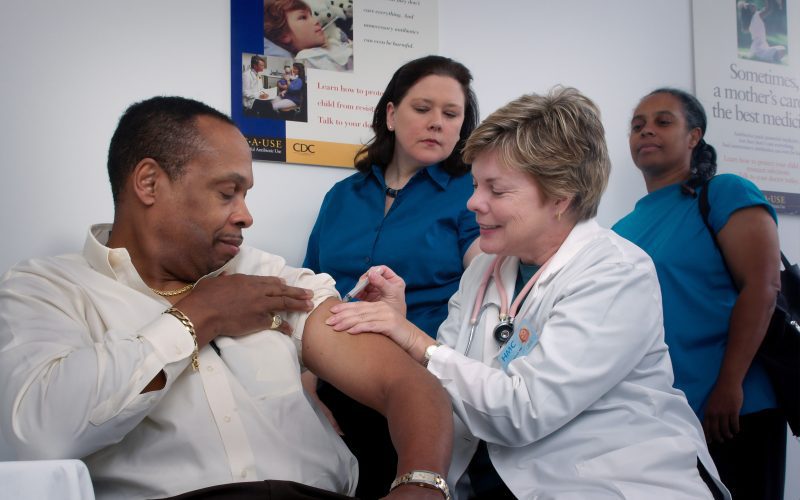Access to quality healthcare is a fundamental human right, but unfortunately, not everyone has equal opportunities to receive it. Healthcare disparities exist when certain populations face barriers in accessing healthcare services due to factors beyond their control such as economic status, race, ethnicity or geography. These disparities have significant consequences on individuals’ health outcomes and the overall wellbeing of society. In this blog post, we will examine how social determinants of health impact healthcare inequalities and explore initiatives aimed at breaking down these barriers to improve access and equity for all.
Defining Healthcare Disparities
Healthcare disparities refer to inequalities in access, utilization, and quality of healthcare services for different groups based on their social or economic status. These disparities can arise from various factors such as race, ethnicity, gender identity or expression, age and income level.
The differences in health outcomes between populations are often stark. For instance, individuals living in underserved communities may have higher rates of chronic diseases such as diabetes or heart disease compared to those living in affluent neighborhoods.
Furthermore, marginalized groups may face additional barriers when seeking healthcare services due to cultural or linguistic differences that create communication challenges with providers. This can lead to a lack of trust between the patient and provider resulting in inadequate care being delivered.
It’s important to recognize these disparities exist and take steps towards addressing them. Providing equitable access to high-quality care is not only a matter of human rights but also has significant implications for public health outcomes overall.
The Impact of Social Determinants of Health
When it comes to healthcare disparities, social determinants of health play a huge role. Social determinants are the socio-economic and environmental factors that affect someone’s overall health status. These include things like income, education level, access to healthy food options and safe living conditions.
Studies have shown that individuals who live in poverty or low-income households are at higher risk for chronic diseases such as diabetes and heart disease due to limited access to healthy foods and healthcare services. Additionally, those with lower levels of education may not fully understand how to manage their health or have the resources available to do so effectively.
Access to safe housing is another important social determinant of health. Individuals who live in substandard or overcrowded housing may be exposed to environmental toxins which can lead to respiratory issues and other illnesses.
Addressing social determinants of health requires a multi-faceted approach that involves partnerships between community organizations, government agencies, healthcare providers and more. By working together towards common goals such as increasing access to healthy foods and improving affordable housing options we can begin making strides towards reducing healthcare disparities caused by social determinants of health.
Addressing disparities through policy and legislation
Addressing healthcare disparities requires a comprehensive approach that includes policy and legislation. Policies need to be in place to ensure equitable access to healthcare services, regardless of an individual’s race, ethnicity, socioeconomic status or geographic location.
One way that policies can help reduce disparities is by increasing funding for programs aimed at improving health outcomes for vulnerable populations such as low-income families and communities with limited access to healthcare. This funding could go towards expanding Medicaid coverage or creating more community-based clinics in underserved areas.
Legislation can also play a significant role in addressing healthcare inequalities. For example, laws could be implemented requiring cultural competency training for all healthcare providers so they can better understand their patients’ unique needs and backgrounds. Legislation could also mandate the collection of data on race, ethnicity and other demographic factors during clinical trials to ensure that new treatments are effective across diverse populations.
It’s essential that policymakers work closely with communities affected by these disparities when crafting policies and legislation solutions. Community input is crucial since people who experience these inequities firsthand often have valuable insights into what would be most beneficial.
Policies and legislation aimed at reducing healthcare disparities are critical pieces of the puzzle needed for achieving health equity. By collaborating with impacted communities, lawmakers can create meaningful change toward greater equality in our nation’s health system.
Initiatives to reduce healthcare disparities
Initiatives to reduce healthcare disparities have gained attention in recent years as more people become aware of the impact of social determinants on health outcomes. One such initiative is community-based care, which focuses on providing healthcare services directly within underserved communities.
This approach helps to bridge the gap between those who lack access to traditional medical facilities and those who receive regular care. By bringing medical professionals into these communities, patients can receive preventative care, screenings, and treatment for chronic conditions without having to travel long distances or miss work.
Another important initiative is increasing cultural competency among healthcare providers. This means improving their ability to understand diverse cultures and values so that they can provide appropriate care for patients from different backgrounds. Healthcare providers who are culturally competent are better able to communicate with their patients, understand their health beliefs and practices, and tailor treatment plans accordingly.
Additionally, initiatives like telemedicine offer a way for individuals with limited access to transportation or living in rural areas with few medical resources to connect with healthcare professionals online. Telemedicine enables remote consultations via video conferencing tools while maintaining patient privacy.
Advocacy groups continue pushing for policy changes aimed at reducing systemic barriers that prevent marginalized populations from accessing quality healthcare services. These efforts include expanding Medicaid coverage across states as well as implementing laws against discrimination based on race or ethnicity when it comes to receiving health insurance benefits.
Conclusion
It is crucial to address healthcare disparities as a means of achieving health equity, particularly for marginalized communities. These disparities are often fueled by social determinants of health such as poverty, inadequate education, and racial discrimination.
Reducing healthcare disparities requires comprehensive policy solutions that acknowledge the root causes of inequality. Such initiatives include improved access to care in underserved areas, increasing funding for community-based programs that target high-risk populations and investing resources in data collection efforts aimed at identifying inequalities within healthcare systems.
While there is still much work to be done, progress has been made towards reducing healthcare disparities over the years. It’s essential we all continue working together towards building a more equitable system where everyone can access quality care regardless of their background or socioeconomic status.
By acknowledging the impact of social determinants on health outcomes and implementing new policies targeted at addressing these issues head-on will lead us closer to achieving this goal. Through collective action and commitment from policymakers and stakeholders alike, we can create a brighter future where everyone has an equal opportunity to live healthy lives free from preventable disease or illness.












